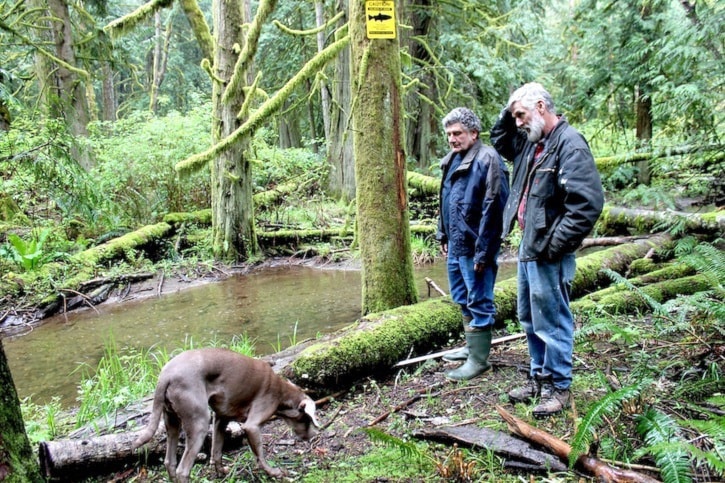Another piece of the puzzle has been found and the Juan de Fuca Salmon Restoration Society (JdFSRS) is that much closer to meeting its objective of increasing spawning capabilities and overwintering for salmon.
With an $18,000 grant from the Pacific Salmon Foundation, the JdFSRS can now go ahead with the expansion of a side channel of the Charters River. This side channel was identified by marine biologists as one of the best potential areas within the Sooke River watershed system for such a side-channel project.
The society will add monies of their own from fund raising projects to the grant funds.The total cost of the project is estimated to be $50,496, with $32,000 coming from the society. Much of the work will be done by volunteers.
“I haven’t heard of any project created to create habitat or improve habitat,” said Elida Peers, administrator at the Charters River Salmon Interpretive Centre.
Wally Vowles, volunteer with the society said the project was “important in sustaining the salmon population.”
He said Charters River was identified as an area where they would get the best bang for their buck.
“We’ve been at this for at least 12 years,” said Vowles, “doing studies, getting a water commitment, it’s been a long time to get to this point. By fall we hope to have a functioning eco-system.”
The whole side-channel restoration will add to the educational programs the centre hopes to have later on in the year. It will provide a viewing area where people can see how salmon thrive and survive in their habitat. The lower 150m of existing Charters River side-channel will be professionally designed and a new 500 sq. metre habitat will be created focusing on coho and trout. The work will be carried out by Wally Vowles, fishery biologist Marc Gaboury and rehabilitation specialist Jim Hamly. Experienced tree planter Al Jones will carry out work on the landscape.
“The beauty of this,” said Vowles, “is we can keep making fish forever, they (the channels) will maintain themselves and we just have to sit back and watch them make fish.”
Work is expected to begin before the spawning season and when water levels are traditionally low.
The JdFSRS is all set to begin. They have the plans, the experts and the volunteers and now all they need is some donated rock, not more than two feet in diameter for rip-rap. The centre can be reached at 250-642-4200.
